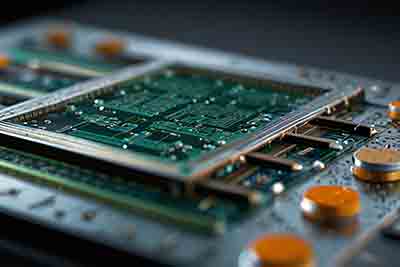10 Micron Thermal Oxide for Optical Experiments
A PhD candidate requested the following quote for thick thermal oxide.
Question:
Could you please let me know if you have Silicon wafers with 10 mircon thick thermal oxide on it?
I want to know do you have the 8 - 10 um thick thermal oxide on silicon wafer (D100mm)? And the price for that. We don't care about the doping; we are just using these for optical experiments.
If so, how much would be the price?
Answer:
Yes! You can buy them online here, or reference 210461 for specs and pricing.
Get Your ST-Cut Quartz Quote FAST! Or, Buy Online and Save!
What are Thick Thermal Oxide on Silicon Wafers Applications?
Thick thermal oxide layers, such as a 10-micron thick oxide, deposited on silicon wafers serve several important functions in semiconductor and microelectronics applications:
-
Dielectric Isolation : Thick thermal oxides provide excellent electrical insulation between different components on a silicon wafer. This stops nearby devices from interfering with each other and causing crosstalk.
-
Surface Passivation : The oxide layer can passivate the silicon surface, protecting it from contamination and oxidation. Stopping the decline of an electronic component's quality over time ensures it remains functional longer.
-
Mechanical Support : Thick oxides can add mechanical strength and stability to the wafer, which is particularly useful in applications where the wafer might undergo various processing steps that could cause stress or damage.
-
Optical Coating : Thick layers of oxide serve well as optical coatings in various optoelectronic applications. Want to change what happens when light hits a wafer? Modify aspects like its reflective quality or the way it bends that incoming beam.
-
Thermal Barrier : Thick oxides act as thermal barriers, helping to manage heat dissipation in high-power devices. Maintaining good device function hinges on addressing this important element.
-
Masking Layer : During ion implantation or diffusion processes, thick oxide layers can act as masks to protect certain regions of the wafer from being doped, allowing for precise control over the doping profile.
-
Microelectromechanical Systems (MEMS) : In MEMS applications, thick oxides are used to create  structural layers or to act as sacrificial layers that are later etched away to release movable parts.
structural layers or to act as sacrificial layers that are later etched away to release movable parts.
For cutting-edge electronics, using thick thermal oxides is critical from start to finish—right from production through ensuring they run smoothly later on.

 structural layers or to act as sacrificial layers that are later etched away to release movable parts.
structural layers or to act as sacrificial layers that are later etched away to release movable parts.